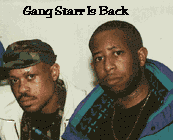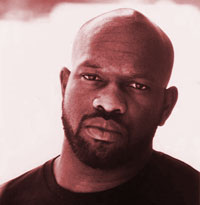 Wow this is a two page story that the New York Times is running…You’d think Henry Louis Gates would’ve learned a few things after his confrontation with Cambridge police last year when they accused him of breaking into his house and jammed him up… Apparently not.. All I can do is shake my head and note that this article appears the night after ABC Nightline ran that story about Black Women not finding suitable men.. As author Bakari Kitwana pointed out, Yes today we all need to highlight and celebrate Black pathologies…
Wow this is a two page story that the New York Times is running…You’d think Henry Louis Gates would’ve learned a few things after his confrontation with Cambridge police last year when they accused him of breaking into his house and jammed him up… Apparently not.. All I can do is shake my head and note that this article appears the night after ABC Nightline ran that story about Black Women not finding suitable men.. As author Bakari Kitwana pointed out, Yes today we all need to highlight and celebrate Black pathologies…
So this article basically says Africans helped white slavers capture us.. Duh.. We’ve been known that. Hell it was Black slaves that usually ran to master and told about slave insurrections. It was Black slave that were sometimes made to be overseers. None of that absolves the horrific institution of slavery which here in the US was rooted in the strong belief that our ancestors who were forced to work those fields were less than human and forced to endure unspeakable horrors. The hatred for us because of skin color remained long after slavery into Jim Crow and as we can see in recent days continues..We wont even get into a discussion of colonialism and the racialized politics around that especially as African nations fought to be free. Meanwhile while this Gates article appears, the state of Texas is erasing and downplaying the harshness of slavery in its history books.
This article is akin to pointing out that there were Jews who helped the German during the height of Nazi Germany.. Not for one minute would one ever think of absolving germany for her role in the holocaust and nor should we be absolving those Europeans who gleefully played roles in Transatlantic slavery, no matter what Africans helped out.. What took place in this 2000 x 3000 land mass we call America rest on the shoulders of ‘Mr Charlie’. He gets no pass on what was done..He was caught holding the bag.. and to be honest if there was some nutcase on the continent who “Helped” sell us into bondage they can be dealt with as well.. But in the meantime it was Mr Charlie of European decent who was all up in here raping our mothers, sisters and grandmothers, snatching up kids and separating our families, beating our people to pulps and basically using and abusing human being stolen from their land. I dont care how many Henry Gates articles are published by the NY Times..He (Mr Charlie ) gets no pass..nuff said
-Davey D-
Ending the Slavery Blame-Game
by Henry Louis Gates
http://www.nytimes.com/2010/04/23/opinion/23gates.html?pagewanted=1
THANKS to an unlikely confluence of history and genetics — the fact that he is African-American and president — Barack Obama has a unique opportunity to reshape the debate over one of the most contentious issues of America’s racial legacy: reparations, the idea that the descendants of American slaves should receive compensation for their ancestors’ unpaid labor and bondage.
There are many thorny issues to resolve before we can arrive at a judicious (if symbolic) gesture to match such a sustained, heinous crime. Perhaps the most vexing is how to parcel out blame to those directly involved in the capture and sale of human beings for immense economic gain.
While we are all familiar with the role played by the United States and the European colonial powers like Britain, France, Holland, Portugal and Spain, there is very little discussion of the role Africans themselves played. And that role, it turns out, was a considerable one, especially for the slave-trading kingdoms of western and central Africa. These included the Akan of the kingdom of Asante in what is now Ghana, the Fon of Dahomey (now Benin), the Mbundu of Ndongo in modern Angola and the Kongo of today’s Congo, among several others.
For centuries, Europeans in Africa kept close to their military and trading posts on the coast. Exploration of the interior, home to the bulk of Africans sold into bondage at the height of the slave trade, came only during the colonial conquests, which is why Henry Morton Stanley’s pursuit of Dr. David Livingstone in 1871 made for such compelling press: he was going where no (white) man had gone before.
How did slaves make it to these coastal forts? The historians John Thornton and Linda Heywood of Boston University estimate that 90 percent of those shipped to the New World were enslaved by Africans and then sold to European traders. The sad truth is that without complex business partnerships between African elites and European traders and commercial agents, the slave trade to the New World would have been impossible, at least on the scale it occurred.
Advocates of reparations for the descendants of those slaves generally ignore this untidy problem of the significant role that Africans played in the trade, choosing to believe the romanticized version that our ancestors were all kidnapped unawares by evil white men, like Kunta Kinte was in “Roots.” The truth, however, is much more complex: slavery was a business, highly organized and lucrative for European buyers and African sellers alike.
The African role in the slave trade was fully understood and openly acknowledged by many African-Americans even before the Civil War. For Frederick Douglass, it was an argument against repatriation schemes for the freed slaves. “The savage chiefs of the western coasts of Africa, who for ages have been accustomed to selling their captives into bondage and pocketing the ready cash for them, will not more readily accept our moral and economical ideas than the slave traders of Maryland and Virginia,” he warned. “We are, therefore, less inclined to go to Africa to work against the slave trade than to stay here to work against it.”
To be sure, the African role in the slave trade was greatly reduced after 1807, when abolitionists, first in Britain and then, a year later, in the United States, succeeded in banning the importation of slaves. Meanwhile, slaves continued to be bought and sold within the United States, and slavery as an institution would not be abolished until 1865. But the culpability of American plantation owners neither erases nor supplants that of the African slavers. In recent years, some African leaders have become more comfortable discussing this complicated past than African-Americans tend to be.
In 1999, for instance, President Mathieu Kerekou of Benin astonished an all-black congregation in Baltimore by falling to his knees and begging African-Americans’ forgiveness for the “shameful” and “abominable” role Africans played in the trade. Other African leaders, including Jerry Rawlings of Ghana, followed Mr. Kerekou’s bold example.
Our new understanding of the scope of African involvement in the slave trade is not historical guesswork. Thanks to the Trans-Atlantic Slave Trade Database, directed by the historian David Eltis of Emory University, we now know the ports from which more than 450,000 of our African ancestors were shipped out to what is now the United States (the database has records of 12.5 million people shipped to all parts of the New World from 1514 to 1866). About 16 percent of United States slaves came from eastern Nigeria, while 24 percent came from the Congo and Angola.
Through the work of Professors Thornton and Heywood, we also know that the victims of the slave trade were predominantly members of as few as 50 ethnic groups. This data, along with the tracing of blacks’ ancestry through DNA tests, is giving us a fuller understanding of the identities of both the victims and the facilitators of the African slave trade.
For many African-Americans, these facts can be difficult to accept. Excuses run the gamut, from “Africans didn’t know how harsh slavery in America was” and “Slavery in Africa was, by comparison, humane” or, in a bizarre version of “The devil made me do it,” “Africans were driven to this only by the unprecedented profits offered by greedy European countries.”
But the sad truth is that the conquest and capture of Africans and their sale to Europeans was one of the main sources of foreign exchange for several African kingdoms for a very long time. Slaves were the main export of the kingdom of Kongo; the Asante Empire in Ghana exported slaves and used the profits to import gold. Queen Njinga, the brilliant 17th-century monarch of the Mbundu, waged wars of resistance against the Portuguese but also conquered polities as far as 500 miles inland and sold her captives to the Portuguese. When Njinga converted to Christianity, she sold African traditional religious leaders into slavery, claiming they had violated her new Christian precepts.
Did these Africans know how harsh slavery was in the New World? Actually, many elite Africans visited Europe in that era, and they did so on slave ships following the prevailing winds through the New World. For example, when Antonio Manuel, Kongo’s ambassador to the Vatican, went to Europe in 1604, he first stopped in Bahia, Brazil, where he arranged to free a countryman who had been wrongfully enslaved.
African monarchs also sent their children along these same slave routes to be educated in Europe. And there were thousands of former slaves who returned to settle Liberia and Sierra Leone. The Middle Passage, in other words, was sometimes a two-way street. Under these circumstances, it is difficult to claim that Africans were ignorant or innocent.
Given this remarkably messy history, the problem with reparations may not be so much whether they are a good idea or deciding who would get them; the larger question just might be from whom they would be extracted.
So how could President Obama untangle the knot? In David Remnick’s new book “The Bridge: The Life and Rise of Barack Obama,” one of the president’s former students at the University of Chicago comments on Mr. Obama’s mixed feelings about the reparations movement: “He told us what he thought about reparations. He agreed entirely with thetheory of reparations. But in practice he didn’t think it was really workable.”
About the practicalities, Professor Obama may have been more right than he knew. Fortunately, in President Obama, the child of an African and an American, we finally have a leader who is uniquely positioned to bridge the great reparations divide. He is uniquely placed to publicly attribute responsibility and culpability where they truly belong, to white people and black people, on both sides of the Atlantic, complicit alike in one of the greatest evils in the history of civilization. And reaching that understanding is a vital precursor to any just and lasting agreement on the divisive issue of slavery reparations.







 Other Hip Hoppers stirring up noise on this on the political front include Keith Knight of the social conscious Hip Hop band Marginal Prophets
Other Hip Hoppers stirring up noise on this on the political front include Keith Knight of the social conscious Hip Hop band Marginal Prophets The SF Examiner Newspaper to Salt Lake City Weekly to
The SF Examiner Newspaper to Salt Lake City Weekly to The Bay Area’s hottest act The Delinquents from East Oakland are also getting into the act. They’re in the process of making post cards that shows their picture on the front with a big Vote No on Prop 21 on the back. They have also included some facts about the proposition as well as their position on other electoral issues. In addition to their popularity, the group has a huge truck that is shrink wrapped with their picture and album cover. They’ll be using this truck promotional tool to get the word out to their folks in the hood to get out and vote as bring them up to speed on some of the politics getting ready to effect ‘The town’.
The Bay Area’s hottest act The Delinquents from East Oakland are also getting into the act. They’re in the process of making post cards that shows their picture on the front with a big Vote No on Prop 21 on the back. They have also included some facts about the proposition as well as their position on other electoral issues. In addition to their popularity, the group has a huge truck that is shrink wrapped with their picture and album cover. They’ll be using this truck promotional tool to get the word out to their folks in the hood to get out and vote as bring them up to speed on some of the politics getting ready to effect ‘The town’.










